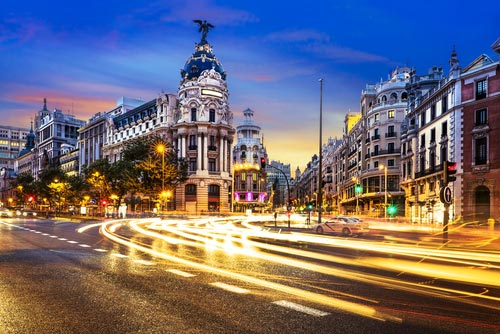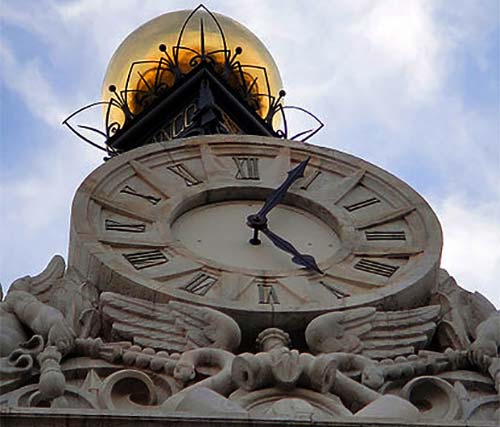Chamartin Railway Station is the second most important station in Madrid. Located in the central district of Chamartin, this station centralizes all communications from the north of the country to…


Chamartin Railway Station is the second most important station in Madrid. Located in the central district of Chamartin, this station centralizes all communications from the north of the country to…

Madrid was founded is the center of the Iberian Peninsula. In fact, there is a plaque in Puerta del Sol called “kilómetro cero” indicated the center of the country. Geographically…

Madrid Barajas Airport is the busiest airport in Spain and the sixth in Europe, it is also the biggest one in the country. It is located in Barajas, a Madrid’s…

Now a days the currency of Spain, along with another seventeen countries in Europe, is the Euro. This currency started to be used in 2002 in the so-called Eurozone, the…

Madrid is a big city and three days are not enough to visit all its wonders. Unfortunately, most of the tourist visiting the capital of Spain don’t have more time….
Madrid is located in the GMT+1 or GMT+2 time zones. Spain, like most European countries, uses daylight saving time program. The time changes regardint the Daylight saving time or summer time program take places the fourth Sunday of March and the fourth Sunday of October. In March you should forward one hour and in October back one hour. That means that Spain is in GMT+1 zone in winter from October to March, and in GMT+2 zone in summer from March to October.

Even though, Europe comprises seven times zones, Spain –the whole country- is located in the same zone. That means once you adjust your watch in Madrid, you should not be worry any more about the time.
Daylight saving time causes a later solar noon than the clock noon. This means that the warmest hours of the day does not happen to meet the noon hours. Especially in summer, avoid being outside in the sun between 2:00 and 4:00 p.m. Also, remember to drink enough water and avoid strong physical activities around this period of the day. Solar noon is the perfect time to enjoy Madrid’s museums!
Right now in Madrid is:
Madrid is the capital of Spain and the biggest city, too. The capital of Spain was a itinerary city until 1561 when Philippe II settled definitely in Madrid. From that moment…
The legal drinking age in Spain is 18. In 2009, the law was change and the legal drinking age was raised from 16. Underage cannot buy or drink alcohol, but usually bartenders and sales people are not very concerned about this restriction. Besides, the legal age for drinking and buying alcohol beverages, there is another law that forbids store to sell alcohol drinks after 10:00 pm. This law was created to avoid a typical Spanish phenomenon called “Botellón”. It is a street party that usually includes vast alcohol consumption, disturbing neighbors and damaging public spaces.

The legal drinking age is a federal law in Spain, meaning every state or region should respected. If you are visiting Spain you should also know that the legal limit of Blood alcohol content (BAC) is 0.5 g/l. Also the BrAC limit is 250 microgrammes of alcohol per litre of breath per expertise drivers and 150 microgrammes per litre of breath for drivers in their first two years after gaining a driving license and common carriers.

Madrid has developed its tourist sector quite a lot in the past decades. This means that many hotels have been built in the city, some of them really luxurious. Currently,…

We know you really want to visit Madrid,but maybe you still are uncertain about where exactly it’s located. In this article we will give you all the information you need…